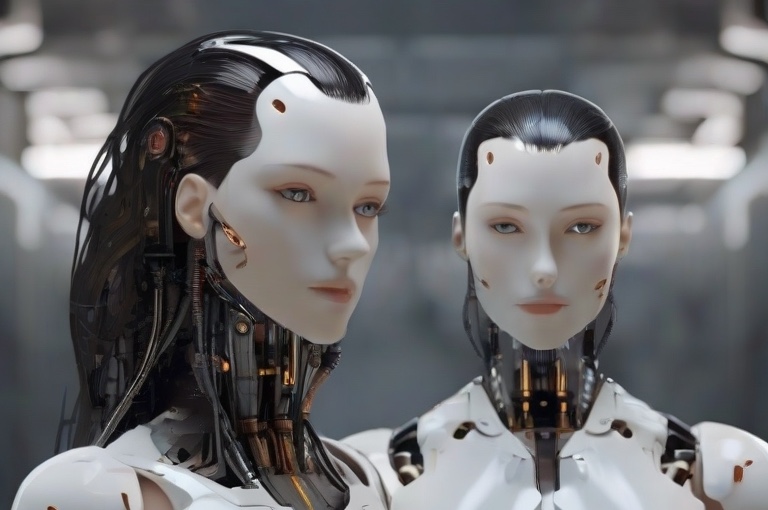Artificial intelligence (AI) is rapidly transforming our world. From healthcare to finance to transportation, AI is being used in a wide range of ways to improve our lives. But as AI becomes more powerful, it is important to ensure that it is used fairly and equitably.
One of the biggest challenges facing AI is bias. Bias can be introduced into AI systems at any stage of the development process, from the data collection stage to the model training stage to the deployment stage. Bias can hurt individuals and society, leading to discrimination, inequality, and even injustice.
In this feature, we will explore the issue of bias in AI. We will discuss the different types of bias that can be introduced into AI systems, the negative impacts of bias, and the steps that can be taken to mitigate bias. We will also look at some of the ways that AI is being used to address bias in society.
The future of AI depends on addressing bias. By working together, we can ensure that AI is used for good and that it benefits everyone, regardless of their background or identity.
Types of Bias
Bias can hurt individuals and society, leading to discrimination, inequality, and even injustice. It is important to be aware of the different types of bias and to take steps to mitigate bias in AI systems. These can take many different forms.
- Data bias: This occurs when the data used to train an AI system is not representative of the population that the system will be used on. For example, if an AI system is used to make loan decisions, and the data used to train the system is only from white men, then the system is more likely to make unfair decisions against women and people of colour.
- Algorithmic bias: This occurs when the algorithms used to train an AI system are biased. For example, if an AI system is used to predict crime, and the algorithm is biased against people of colour, then the system is more likely to predict that people of colour will commit crimes, even if they are no more likely to commit crimes than people of other races.
- Human bias: This occurs when human biases are introduced into the development or deployment of an AI system. For example, if a team of engineers is developing an AI system to make hiring decisions, and the team is all white men, then they may be more likely to build a system that favours white men.
Impacts of Bias
Bias in AI systems can hurt individuals and society. Some of the negative impacts of bias in AI systems include:
Discrimination: Biased AI systems can discriminate against certain groups of people, leading to inequality and injustice. For example, if an AI system is used to make loan decisions, and the system is biased against women, then women are more likely to be denied loans, even if they are just as qualified as men.
Inaccuracy: Biased AI systems can be inaccurate, leading to poor decision-making. For example, if an AI system is used to predict crime, and the system is biased against people of colour, then the system is more likely to predict that people of colour will commit crimes, even if they are no more likely to commit crimes than people of other races. This can lead to people of colour being unfairly targeted by law enforcement.
Loss of trust: Biased AI systems can erode public trust in AI, making it more difficult to deploy these systems in the future. For example, if an AI system is used to make hiring decisions, and the system is biased against women, then women are less likely to want to work for a company that uses this system. This can lead to a shortage of qualified workers and a loss of economic opportunity.
Mitigating Bias
There are several steps that can be taken to mitigate bias in AI systems. Some of the most effective strategies for mitigating bias include:
- Using diverse and representative data: This is one of the most important steps in mitigating bias in AI systems. By using data that is representative of the population that the system will be used on, you can help to ensure that the system is not biased against any group of people.
- Using fair algorithms: There are several fair algorithms that can be used to train AI systems. These algorithms are designed to mitigate bias in the training process.
- Ensuring transparency and accountability: It is important to ensure that AI systems are transparent and accountable. This means that users should be able to understand how the system works and why it makes the decisions that it does.
Conclusion
Bias is a serious challenge facing AI. It can hurt individuals and society, leading to discrimination, inequality, and even injustice. However, there are several steps that can be taken to mitigate bias in AI systems. By taking these steps, we can help to ensure that AI is used fairly and equitably.
One of the most important steps in mitigating bias is to use diverse and representative data. This means using data that is representative of the population that the system will be used on. For example, if an AI system is being developed to make loan decisions, then the data used to train the system should be representative of the population that will be applying for loans.
Another crucial step in mitigating bias is to use fair algorithms. Fair algorithms are designed to mitigate bias in the training process. There are several different fair algorithms that can be used, so it is important to choose the algorithm that is best suited for the specific application.
Finally, it is important to ensure that AI systems are transparent and accountable. This means that users should be able to understand how the system works and why it makes the decisions that it does. By ensuring transparency and accountability, we can help to build trust and confidence in AI systems.
Mitigating bias in AI is an important challenge. However, by taking steps to mitigate bias, we can help to ensure that AI is used fairly and equitably.





















